When completed in 1915, Arrowrock Dam, nearly 350 feet tall, became the world’s tallest dam. Impounding the Boise River, just 22 miles east of Idaho’s capital city, the impressive concrete arch structure acted as the keystone of the U.S. Bureau of Reclamation’s plan to transform the high mountain desert in the state’s southwestern corner into an irrigated Eden. While the region had seen boom-and-bust cycles following gold strikes in the nearby Boise Basin, sustained economic growth and settlement required the further development of agricultural enterprises, akin to efforts similarly undertaken throughout the American West. Private investment had thus far failed to fully harness the irrigation potential of the Boise River, a 102-mile-long tributary of the Snake River. In 1910, the recently established federal engineering bureau initiated plans to fully utilize this water resource.

With the Boise Project underway, a wealth of promotional material and documentary photography extolling the virtues of the Bureau’s work soon appeared. The massive construction site lay a short train-ride away from downtown Boise, and the beautiful yet rugged river canyon, coupled with a general interest in the undertaking, drew curious onlookers throughout the multi-year building process. While numerous professional photographers, including one paid directly by the bureau, soon turned their lenses toward the structure rising in the riverbed, many laymen also took the opportunity to photographically document their visits to the site. From these excursions has come an astonishing body of real photo postcards. Perhaps no other single location in the region was more photographed between 1912 and 1920 than Arrowrock Dam.
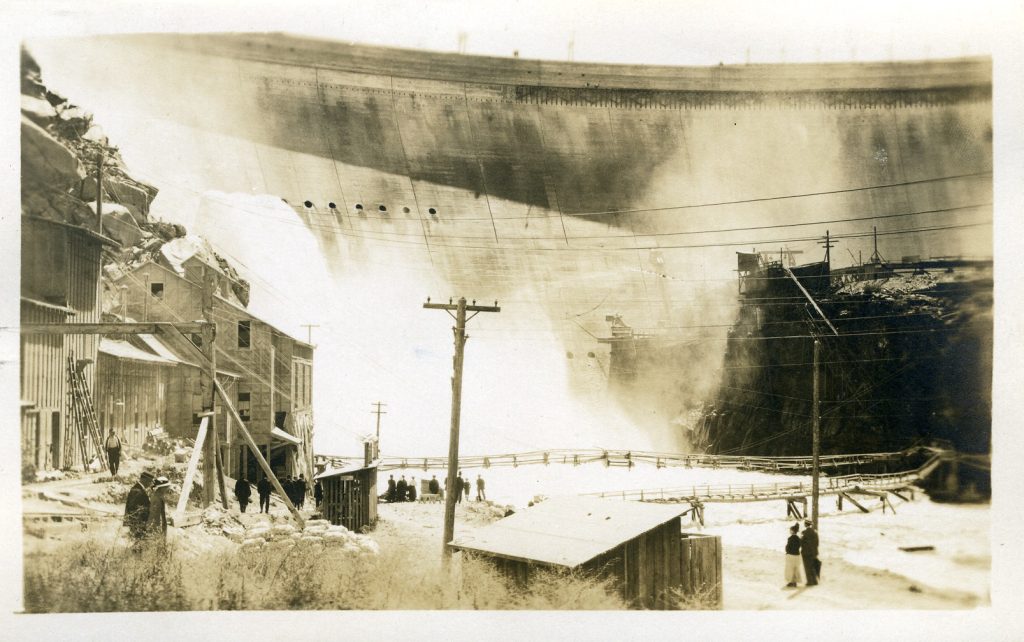
To document its construction processes, as well as promote the settlement of land reclaimed through its engineering prowess, the bureau hired 22-year-old Walter John Lubken of Boise as its official photographer. Between 1903 and 1917, Lubken traveled throughout the American West capturing scenes at 25 bureau projects, including Arrowrock. Shot using glass-plates negatives, his images were used in official reports as well as in promotional brochures, pamphlets, and advertisements dispersed throughout the country by local chambers of commerce and commercial clubs hoping to lure farmers and settlers westward. Like many photographers of the era, Lubken sold his documentary, yet artistic, images as prints and real photo postcards as a side business.
Lubken’s real photo postcards can sometimes be identified by his embossed name protruding from the corner of the card. However, most of his postcards lack any type of marking typically used during the period, either on the card stock itself or fixed on the image via a reverse etching into the original negative. After twenty years of postcard collecting, I’ve concluded that Lubken’s Arrowrock work can be identified through several clues.
First, as the official bureau photographer, he likely had unlimited access to the construction site, allowing him to produce unrivaled shots including one displaying a service tunnel deep within the concrete structure. These photographs are well-composed and offer unique perspectives when compared with other photographers’ routine efforts.
The images suggest the photographer was one intimately familiar with the location, one who visited the Boise River canyon in the different seasons over the course of several years to capture the construction progress. Indeed, Lubken lived in Boise with his wife. An itinerant postcard producer would likely not have the time nor resources for numerous visits, let alone effectively compete with the number of quality postcards Lubken brought to market.
Second, many of Lubken’s shots, both closeups of dam features and wide-angle views capturing the scale of the enterprise, were reproduced onto cards that also featured a statistical writeup about Arrowrock Dam.
Third, my personal collection contains signed 8” by 10” prints marked with Lubken’s name that feature identical scenes as those found on mass-produced real photo postcards. This evidence has led me to conclude that many unmarked cards can be attributed to Lubken.
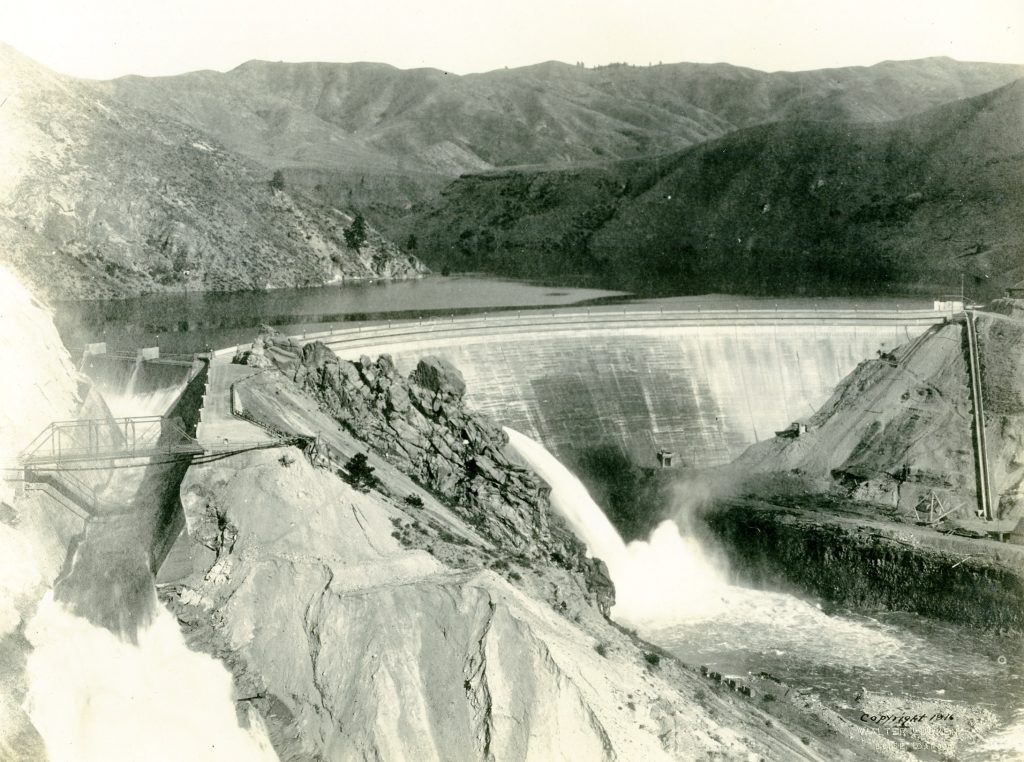
a heavy spring run-off flowing through the dam’s outlets and over its spillway
The scale of the reclamation undertaking also brought other photographers seeking to create an eye-catching image. The Patton Post Card Company of Salem, Oregon operated the Pacific Northwest’s largest postcard store in the 1910s. Their lead photographer, Eugene Everett Lavalleur, traveled throughout the region photographing main streets, landscapes, natural wonders, and the region’s wealth of hydropower and irrigation superstructures. Lavalleur visited the Arrowrock site likely in the spring or summer of 1915 to document the nearly completed dam. By 1918, he had purchased the postcard business and rebranded the studio the Pacific Photo Company. Sometime in the 1920s, Lavalleur sold his negatives and equipment to Wesley Andrews.
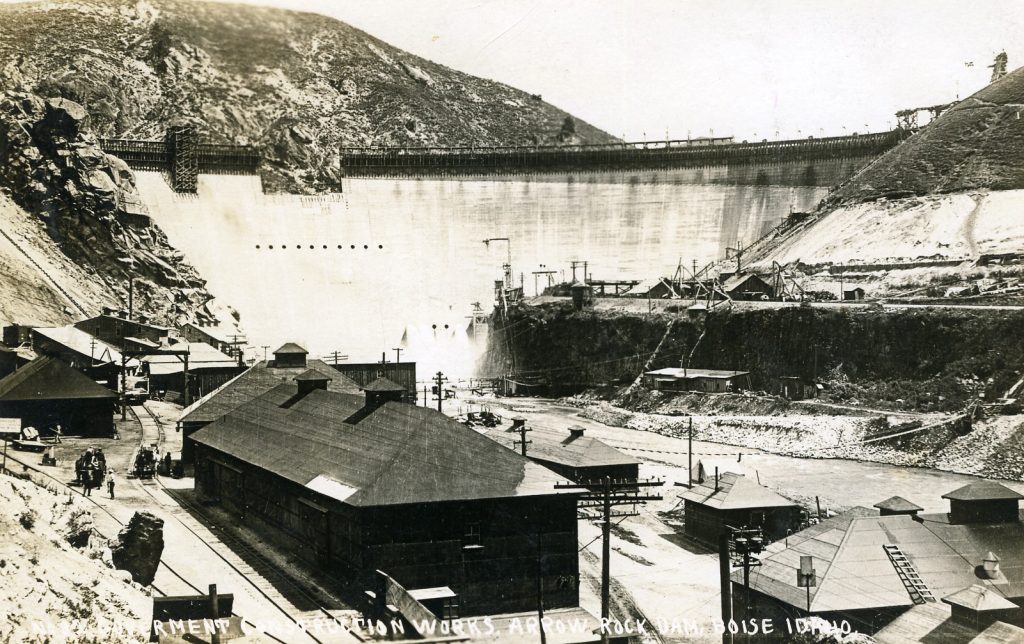
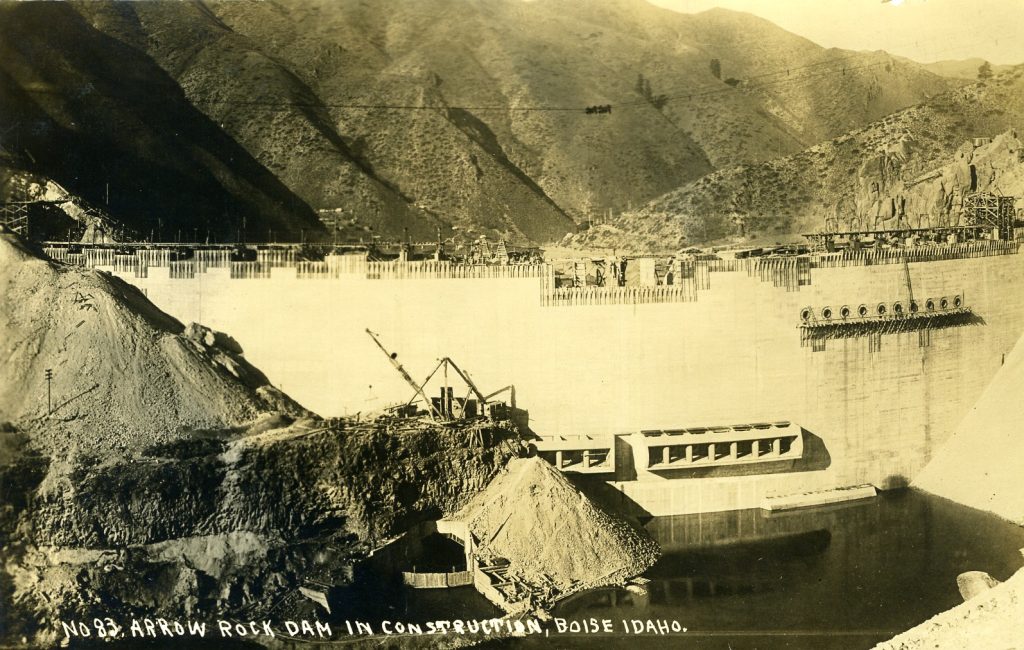
Wesley Andrews, a prolific real photo postcard photographer in his own right, is often mistakenly credited with Lavalleur’s work. While also providing studio services, Andrews’ business model mainly focused on the sale of real photo postcards, producing and selling tens of thousands of them through his storefront in Baker City, Oregon, and later, Portland. Most of his cards are identifiable through recto and verso markings, as well as through the distinctive WACO stamp box marking on the photo paper he had produced for his exclusive use.
As we can see from images of Arrowrock Dam that follow, Andrews was not averse to reusing other photographers’ prints and negatives, including those of Lavalleur and Lubken, to supplement his own image stock. Andrews likely purchased the intellectual rights of Lavalleur’s work and therefore had no obligation to credit the original artist, however, Lubken’s governmental work provides evidence that Andrews removed the original photographer’s name from the image on the real photo postcards he sold. Interestingly, Andrews did include the bureau photographer’s name on the verso of picture postcards he produced.
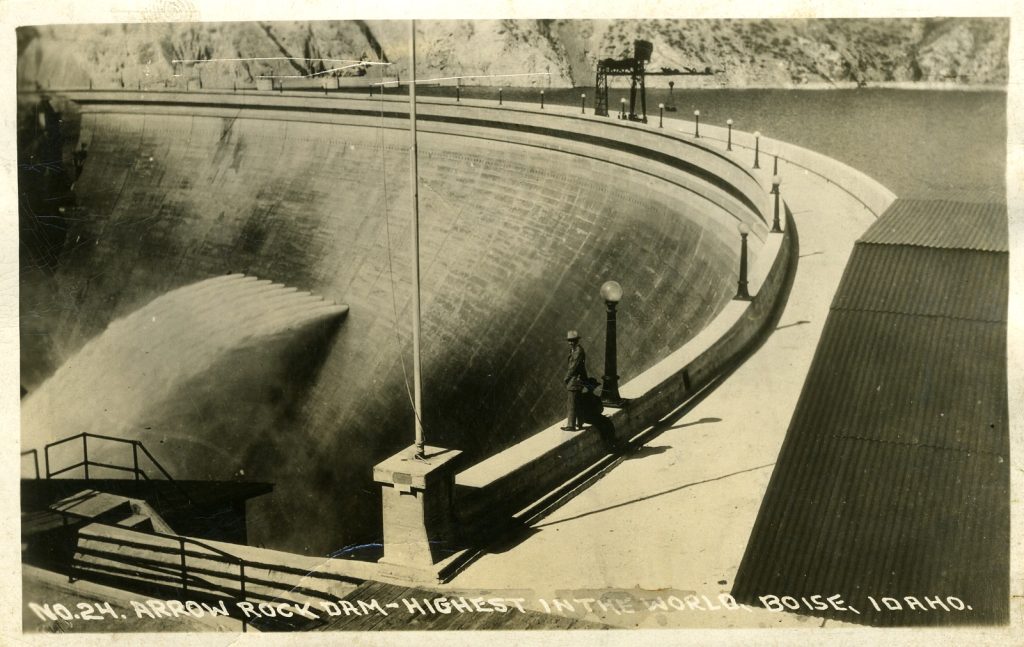
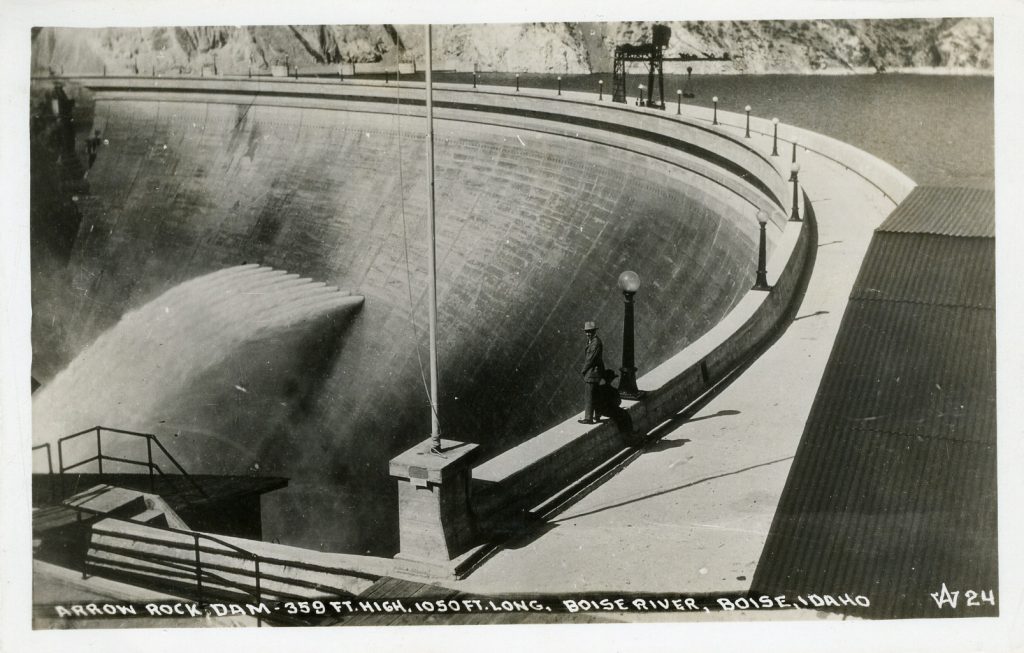
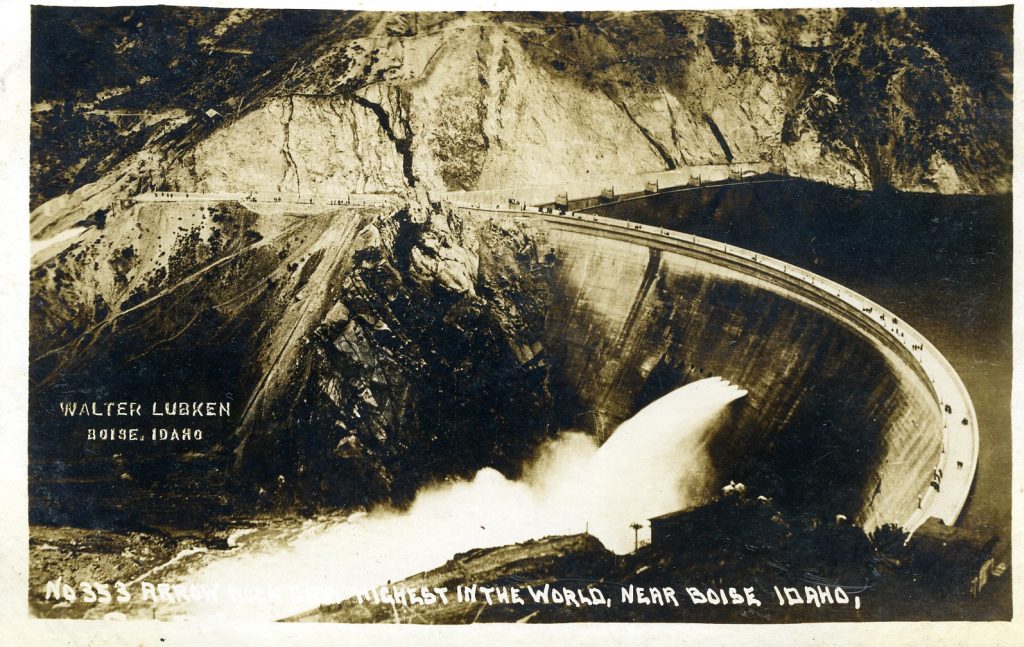
of real photo postcards, leaving his name on the image to give credit
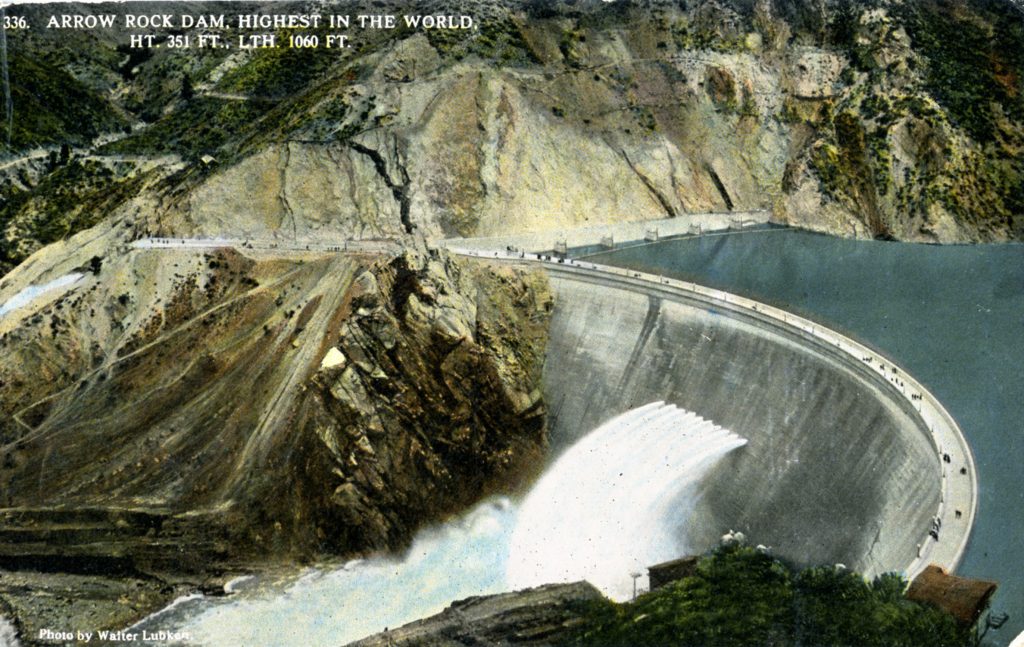
Walker Lubken in lower left corner.
The relative ease of creating one’s own real photo postcards and the draw of the construction site meant that there were plenty of cards created by unknown amateur photographers who visited Arrowrock over the years. These ranged from the construction crews documenting their own work, to area residents eager to capture evidence of the area’s proud transition into modernity. The irrigation structures built by the Bureau throughout the American West truly transformed landscapes and inspired many to capture and share this change through real photo postcards.
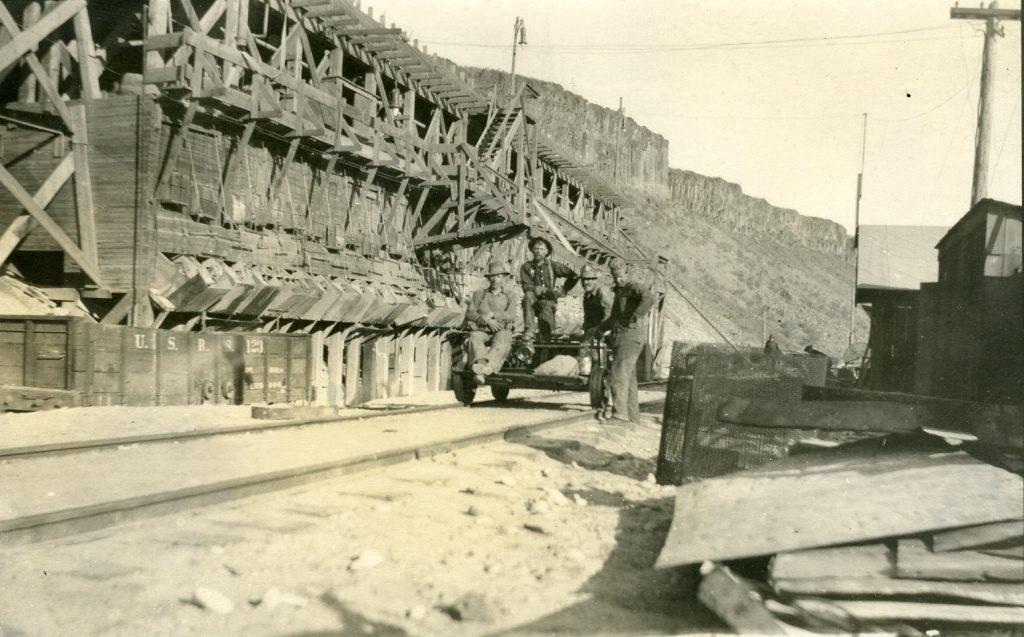
Emil H. Dietrich outside the cement plant, 1913.
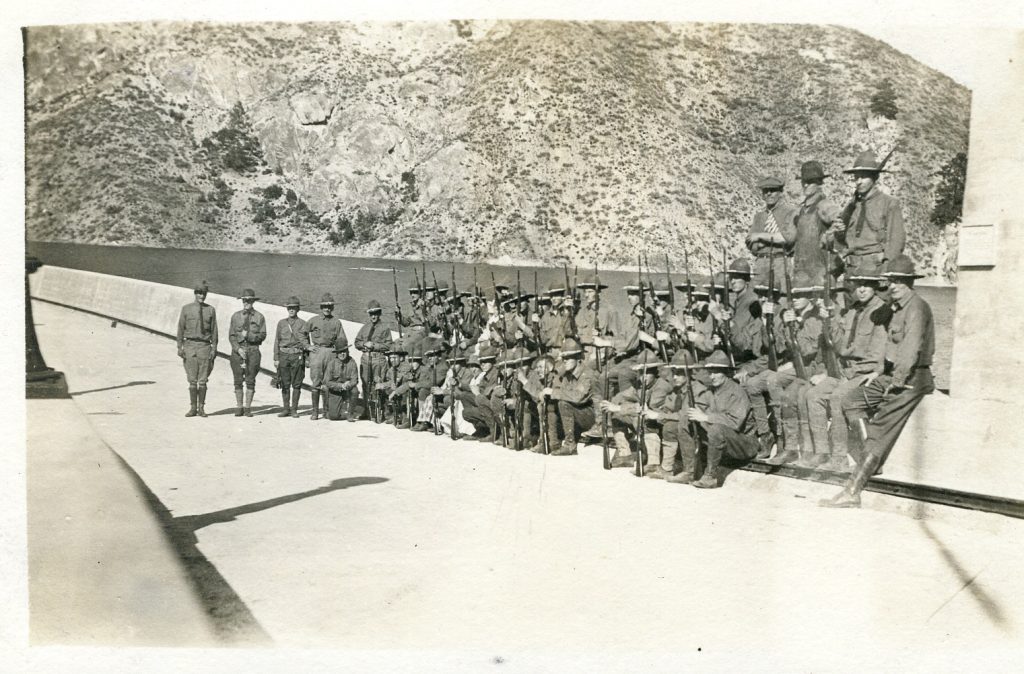
taken on the crest of Arrowrock Dam, 1918.
Such concrete evidence allows identification of W/A Pacific Northwest rppc in my holdings. Tying Wesley Adams to these works is information I wasn’t aware.
Thank you.
the miracle of concrete – where would we be without it – thanks for the post –
It was interesting to see the various markings used to establish the contributions of Andrews and Lubken to the variety of Arrowrock Dam postcards